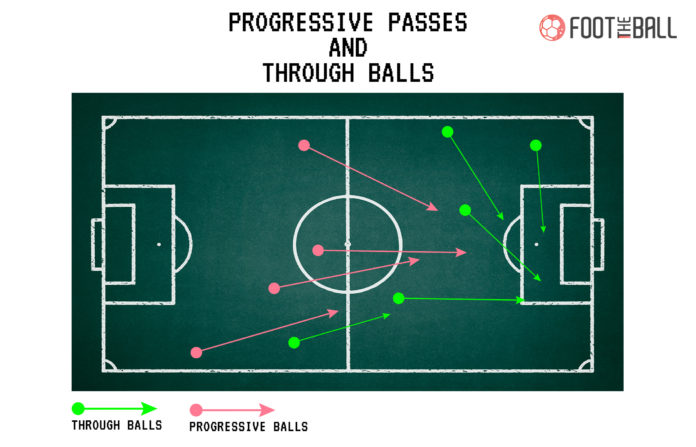When Barcelona created history by winning six trophies in the 2008-09 season, it was seen as a resurgence of the possession-based system. Watching Pep Guardiola’s team just using short progressive passes to play a team out of the game was a mesmerising sight. And what it brought to the fore was the importance of passing.
Barcelona won the La Liga, UEFA Champions League, Copa del Rey, UEFA Super Cup, Supercopa de Espana, UEFA Super Cup, and FIFA Club World Cup. It was an unprecedented feat in the history of football that has only been repeated by Bayern Munich.
But what Barcelona showed was how players with brilliant vision could combine to reach the pinnacle of football with short passes as the base of their play. And it would in turn cause a domino effect that would bring massive changes to the game of football.
Two simple metrics
A player’s contribution in a game is broadly gauged on two broad parameters- on-the-ball and off-the-ball movement. These two are then divided into further statistics. However, like so many things, some statistics were given more importance while some were glossed over. This led to a very rudimentary understanding of the game. Two such metrics were progressive passing and through balls.
We have other metrics like Passes Allowed per Defensive Action (PPDA), which measures how aggressive a team’s pressing is. Another metric is the Expected Offensive Value Added (xOVA)which measures a player’s actual offensive contribution.
However, any attacking metric in one way or other is based on some base metrics. Two of these metrics are progressive passes and through balls.
What are Progressive Passes?
A pass is considered progressive if it fulfils one of the three following conditions:
- The distance of the pass is at least 30 metres if it starts and ends in one’s own half.
- The distance of the pass is at least 15 metres if the pass begins in the team’s half but ends in the opposition’s half
- The distance of the pass is at least 10 metres if the pass starts and ends in the opposition’s half.
Here are 40 types of progressive pass according to ASA's definition (passes that move the ball at least 25% closer to goal), sorted most to least valuable by average goals added. pic.twitter.com/nBzRqanbg9
— Eliot McKinley (@etmckinley) January 31, 2021
The use of distance is paramount as it helps differentiate a simple forward pass from a pass that may require skill and vision to spot a teammate.
Most players who operate in the half-spaces are usually the top progressive passers. Kevin de Bruyne, Luka Modric, and Thiago are some of the top players at moving the ball towards the goal.
Consider this, if a player emerges with the most passes in a game, a layman would say the player was deeply involved in the team’s play. While this may be true, what is more, important is the direction of passes.
A look at passing stats from the top five leagues would show one thing clearly, defenders and defensive midfielders usually top the list.
In Premier League, the top passers are Joao Cancelo, Aymeric Laporte, Rodri, and Virgil Van Dijk, who are either defenders or midfielders.
It is the same case in Bundesliga, Ligue 1, Serie A, and La Liga.
However, few of these players are among the top players in line-breaking through balls. Therefore, most of their passes are bound to the opposition’s goal as a defender.
There are exceptions as well like Trent Alexander-Arnold who ranks 13th in passes but is by far the best progressive passer in the league.
50 Premier League players have 4 progressive passes from open play per 90 minutes.
21 players have 5.
5 players have 6.
2 players have 7.
0 players have 8, 9, or 10.
Trent Alexander-Arnold has 11.
— John Muller (@johnspacemuller) January 25, 2022
Through Balls
Most of the time, we could say that through balls is a type of progressive pass. It is a pass that exploits the gaps in the opposition’s defence to send the ball to a teammate.
This skill is a very accurate representation of a player’s actual offensive value. Consider this, Lionel Messi had a poor last season but still topped the through ball charts in Ligue 1.
Manchester United’s Bruno Fernandes, on level terms with Tottenham’s Harry Kane, were the top through-ball players in the Premier League last season.
Through balls are very important as a successful one usually leads to a big chance for the team.
Read More: Ligue 1 no more a farmer’s league
Progressive Passes and Through Balls connection
A through ball expert may be good in progressive passes but not every progressive passer can be a through ball expert. For many years, these two metrics were dominated by players across the front line. However, now it depends more on the system.
If we look at the top five players for through balls in the Premier League, there are four attackers and one fullback (Joao Cancelo).
In the Bundesliga, we have two defensive-minded midfielders (Mahmoud Dahoud and Joshua Kimmich) among the top five. Serie A has two central midfielders, while Ligue 1 last season had two defensive midfielders (Youssouf Fofana and Cheick Doucouré) among the top through ball players.
In 2011/12, Lionel Messi provided more through balls (71) than Xavi and Iniesta COMBINED (43).
He also scored 73 goals that same season 💀🐐 pic.twitter.com/ATmJ0Det65
— Frank (@messiviews) November 8, 2021
And this stat is not a coincidence. Instead, it shows how football tactics and systems have become more fluid. For instance, look at Liverpool, who use fullbacks as their creative fulcrum. This may have been unthinkable even two decades back.
Going back to the through balls metric, we discover an exciting observation.
The two Ligue 1 defensive midfielders, Fofana and Doucouré, who topped the through-ball charts, are not of the same calibre for progressive passing. According to fbref, Doucouré records 5.16 progressive passes per 90 minutes, which is not good enough to be ranked among the top 10 per cent of all midfielders. On the other hand, Fofana fares worse, good enough to only be among the top 20 per cent of midfielders.
However, this is not the case for all defensive players. For instance, Joshua Kimmich and Joao Cancelo have brilliant progressive passes numbers of 9.51 and 7.62 per 90 minutes respectively.
And this could be explained through the team’s stats that these four players play for.
Doucouré’s team Lens finished seventh in the Ligue 1 last season and did not dominate the attacking metrics in Ligue 1. They were sixth when it comes to goals, ninth in terms of xG, tenth in Buildup Disruption Percentage (BDP), and seventh in Field Tilt.
Meanwhile, Fofana’s team was fifth in terms of goals and seventh in terms of goals against, but they topped in BDP and rank third in Field Tilt.
Kimmich and Cancelo’s team dominate these metrics and play a far more attacking style of football which helps the player’s statistics.
So, progressive passing and through balls are metrics that have come a long way, and are no more confined to a certain set of positions, but are now rather more dependent on the system and tactics that a team employs.
*This article is sponsored by Xebia, a pioneering Software Engineering and IT consultancy company, started in Netherlands. Xebia in Netherlands proudly supports the Dutch national football team.




